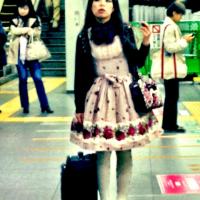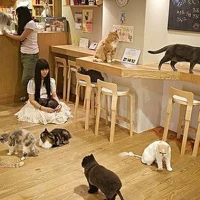
Gakushū juku (Japanese: 学習塾; the term cram schools is in Japan is currently known as “juku”. Juku are special private schools (primarily in Japan) that offer lessons conducted after regular school hours and on the weekends.
Although best known and most widely publicized for their role as “cram schools”, where children (sent by concerned parents) can study to improve scores on upper-secondary school entrance examinations, academic juku actually perform several educational functions: They provide supplementary education that many children need just to keep up with the regular school curriculum, remedial education for the children who fall behind in their work, and preparation for students striving to improve test scores and preparing for the all-important upper-secondary and university entrance examinations. In many ways, juku compensate for the formal education system’s inability or unwillingness to address particular individual problems. Half of all compulsory school-age children attend academic juku, which offers instruction in mathematics, Japanese language, science, English and social studies. Many other children, particularly younger children, attend nonacademic juku for piano lessons, art instruction, swimming, and abacus (soroban) lessons. To some observers, juku represent an attempt by parents to exercise a meaningful measure of choice in Japanese education, particularly for children attending public schools.
Juku also play a social role, and children in Japan say they like going to juku because they are able to make new friends; many children ask to be sent because their friends attend. Some children seem to like juku because of the closer personal contact they have with their teachers.
Jukus have been much debated, and often criticized in the late twentieth century. Because of the commercial nature of most juku, some critics argue that they have profit rather than education at heart. Not all students can afford to attend juku. Therefore juku introduce some inequality into what had been a relatively egalitarian approach to education, at least in public schools through ninth grade. However, the schools can not price themselves beyond the reach of their potential clientele. Juku are often given some priority in family budgeting.

Students who do not attend juku are not necessarily at a disadvantage in school. Other avenues of assistance are available. For example, self-study literature and supplemental texts and study guides, some produced by publishing houses associated with juku, are widely available commercially. Most of these items are moderately priced. A correspondence course of the Upper-Secondary School of the Air is broadcast almost daily on NHKeducational radio and television channels. These programs are free, but accompanying textbooks have to be bought. In addition, about 1% of elementary school students and 7.3% of lower-secondary school students take extra lessons at home with tutors.
Juku have received additional attention in recent years as there has been a general perception of a decline of educational standards in Japan; policy decisions like the abolition of Saturday schooling as well as the reduction of curricular content have been questioned (see Yutori education).
While new media have been introduced into juku as instructional and delivery methods, traditional teaching is increasingly shifting to individual tutoring. This shift is partly a response by the supplementary education industry to declining numbers of children and the threat this decline poses to their industry.

Juku in the Meiji era
During the early decades of the Meiji Era (1868-1912) when Japan was being transformed into a modern industrial nation, very few Japanese had the opportunity to take advantage of Western learning that had suddenly become available, but those who did have access to it, applied themselves with extraordinary zeal.
One of the stories about the dedication and diligence of young Japanese students during this period invoved a young man who set out to memorize every word in the English language dictionary. After getting to the point where he could recite all of the words on a page, he would tear the page out of the book and eat it in the hope that this would make the words on the page a permanent part of him.
This obsession with learning has continued to be a characteristic of the Japanese since the Meiji Era, but has resulted in a number of changes that have cause the Japanese schooling system to develop into a virtual hell for the many young Japanese school children and their mothers. It is now often said that all education in Japan stops at high school. The reason for that being that to enter a good college or university, Japanese children have to study so hard in order to pass the entrance examinations, that by the time they enter college they are burned out and refuse to study any longer.
Another factor in the negative reputation that Japanese schools have among students and their parents is that the primary method of learning is by memorizing vast amounts of data in order to pass an entrance examination. Sonce the 1960s these examinations became so competitive and so difficult that attending regular school classes was not enough for even those who were above average students. This situation spurred the rapid growth of juku or provate tutoring schools as commercial enterprises.
Juku attendance rose from the 1970s through the mid-1980s; participation rates increases at every grade level throughout the compulsory education years. This phenomenon is a source of great concern to the Ministry, which issued directives to the regular schools that it hoped would reduce the need for afterschool lessons, but these directives have had little practical effect. Some juku even have branches in the United States and other countries to help children living abroad catch up with students in Japan.

Juku in the Tokugawa shogunate Era (1603-1868)
The first juku’s appeared during the reign of the Tokugawa shogun. These were small private schools founded by individual masters who taught different philosophical ways of thinking, and such specialized skills as martial arts. After the fall of the shogunate system of government in 1868, juku began offering classes in English, the abacus and music lessons to name but a few.
Present day juku’s
Today most juku’s are huge institutions with branches all over the country and with thousands of students. They offer a wide range of subjects as well as preparation for specific entrance exams. Since the 1970s another kind of juku was developped. This one solely for the benefit of passing entrance exams and focussing only on memorizing data. These are called yobiko.
Not just for university entrants
If you believe that school children only start at high school age to attend juku or yobiko you are wrong. Children as young as pre-school age first take their tentitive steps towards education and even children that want to attend a (good) kinder garden, need to go to yubiko or juku to pass the difficult entrance exams. One of the things children need to be able to do before they enter school is to be able to fold some simple origami and sometimes they even need to be able to write their own name already.
Juku in todays economy
Today the juku schools are somewhat in a decline. The reason for that is the current economic situation. Many parents can simply not afford to send their children to juku anymore and, while in the past it meant you surely had a rosy future ahead when you were attending a great university, with todays economy a good education is no longer a sure fire way to land a good job. Even the best of the best need luck on their side to get that coveted first job. This is one of the reasons many students no longer feel like spending days and nights on end memorizing up to the point of encyclopedic knowlegde in order to pass the entrance exams to most schools. Should the Japanese economy starts its recovery, the juku schools are sure to win back in popularity unless the Japanse government finally starts some radical reforms and changes the way Japanese students are educated. So far Japanese children still have a life of studying in solitude to look forward to before starting a life of long working hours and little holiday.










